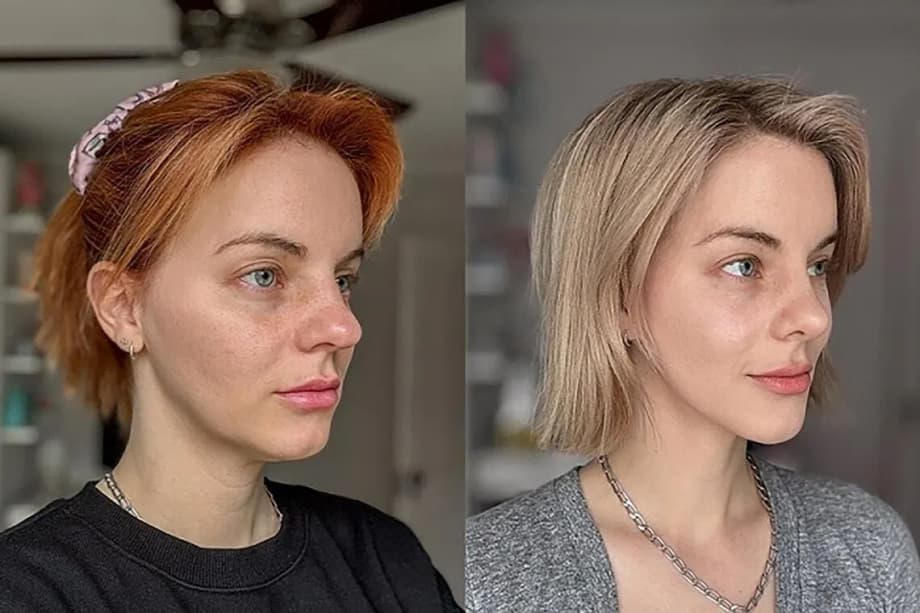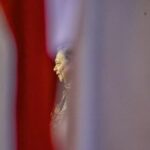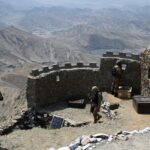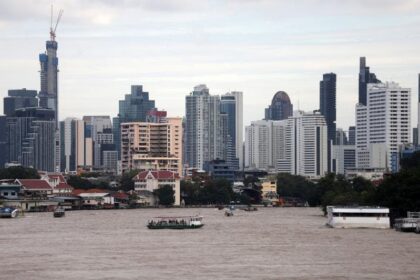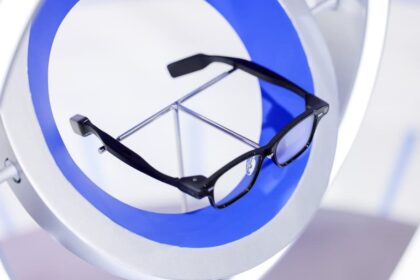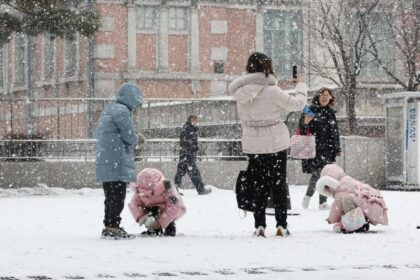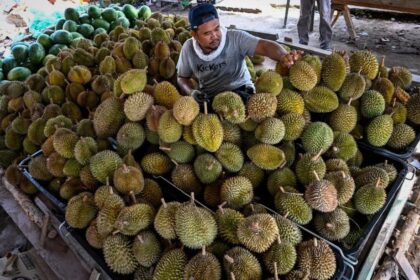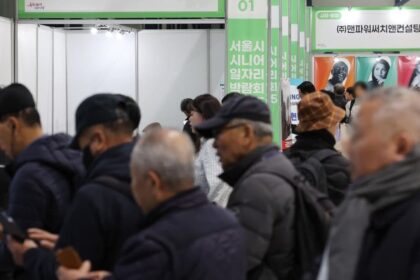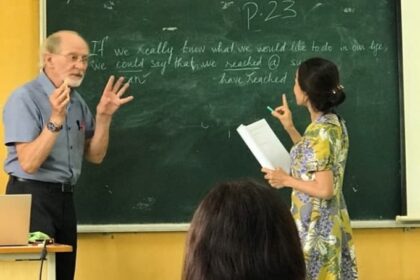Inside Seoul’s glow up boom
On a first visit to Seoul in 2023, American traveler Heidi Mae noticed Gangnam subway walls covered with glossy ads for cosmetic clinics, each image promising glassy skin and defined features. After losing nearly 10 kilograms, she saw her cheeks and jawline soften. The city felt like a place where appearance is treated with clinical precision, so she returned a year later for a full facelift and rhinoplasty at a well known clinic in Cheongdam. The experience became a personal case study of why so many visitors now fly to South Korea for anti aging care.
- Inside Seoul’s glow up boom
- What makes Korean anti aging care different
- The menu of treatments and how they work
- Price, access, and the rise of beauty concierges
- Who is coming to Korea and why
- Risks, regulation, and informed consent
- Technology edge, from AI to regenerative medicine
- Planning a safe and effective trip
- Economic impact and where the market is headed
- What to Know
Medical tourism tied to beauty is surging. In 2024, South Korea hosted a record 1.17 million overseas patients, the highest since the country began actively courting international patients in 2009. Dermatology drew the largest share with about 705,000 patients, accounting for more than half of all foreign medical visits, followed by plastic surgery, internal medicine, and comprehensive check ups. On social media, the tag KoreaGlowUp has turned countless before and after clips into word of mouth referrals, pushing interest well beyond Asia.
Patients often cite three reasons for picking Seoul. First, the skill and specialization of surgeons and dermatologists, honed by intense domestic demand and heavy competition across hundreds of clinics. Second, the breadth of services and devices, from quick injectables to complex facial surgery that aims for subtle, natural changes. Third, convenience and price, since many clinics accept walk in consultations and packages often cost less than comparable care in the United States or Western Europe.
After her procedures, Ms Mae said the change felt immediate and visible.
“It was a night and day difference. I felt like myself again, just fresher and more lifted.”
What makes Korean anti aging care different
While many procedures were pioneered abroad, South Korea has become a refinement hub that adapts and personalizes methods for different facial structures. A frequent example is the modern facelift. Surgeons plan incisions around the ear, gently lift the skin, tighten the SMAS (superficial muscular aponeurotic system), and redrape for a smoother line along the jaw and cheeks. For East Asian faces, thicker skin and a denser network of small vessels in the dermis can increase bleeding risk and demand meticulous control. Veteran plastic surgeons, including Dr Kim Soo chul of AgingL Plastic Surgery in Gangnam, describe how these anatomical differences raise the stakes for precision.
Refinements also extend to combination planning. Many clinics tailor surgery to work alongside fat grafting, laser resurfacing, or skin booster injections. The goal is a balanced, layered effect, not a single change that draws attention. In practice that can mean a lower face and neck lift, plus small volume restoration to the midface and under eye area, followed by noninvasive collagen stimulation to improve texture over time.
The menu of treatments and how they work
South Korea’s clinics market full paths to slower aging rather than a single product. The most common categories fit into three groups: energy devices, injectables and skin boosters, and surgery or hybrid procedures. Each targets a different layer of the face, which helps explain why many visitors return home with changes that seem natural but cumulative.
Energy devices that tighten and brighten
Ulthera is a form of high intensity focused ultrasound that heats tissue below the skin to trigger collagen remodeling. It tightens mild to moderate laxity along the jawline and brow without incisions, though results appear gradually over two to three months. InMode Forma uses radio frequency to warm tissue at a controlled depth, which can improve elasticity and fine lines. Lasers are the workhorse category for pigment, redness, pores, and texture, and many clinics alternate several devices over a short stay to tackle different targets.
Injectables and skin boosters
Botox relaxes muscles that create expression lines, softening crow’s feet and frown lines for three to five months. Fillers, most often hyaluronic acid gels, restore volume under the eyes, in the cheeks, and around the mouth. Korea’s distinct signature is the rise of skin booster microinjections, such as polynucleotide solutions like Rejuran and collagen stimulators such as Juvelook. These are placed superficially across the face to improve hydration, texture, and glow by nudging the skin to rebuild its matrix. Many travelers come for a cycle of boosters spaced over several weeks, with instructions to continue maintenance at home.
Surgery and hybrid approaches
For deeper laxity and heavier jowls, surgery remains the definitive option. Modern facelifts are often paired with subtle fat grafting to restore volume and smooth transitions across the cheek and temple. Thread lifting can offer a temporary lift for select patients with mild descent, though results and durability vary widely and depend on skill, placement, and the type of suture. Some clinics layer surgery and devices across staged visits to limit swelling at any one time while building toward a more complete change.
Price, access, and the rise of beauty concierges
Travelers often compare costs and find that a multi treatment plan in Seoul can be priced below what a smaller menu would cost in major US cities. Many dermatology clinics allow same day consultations, and popular platforms inside Korea help locals sort options and read reviews. To bridge language gaps and logistics, a growing industry of beauty concierges connects foreign patients with clinics, bundles appointments, provides translation, and arranges pickups and hotels. These agents usually earn a commission from clinics, which means the service can feel free to the traveler even though the cost is folded into the clinic’s marketing budget.
Concierge growth has opened the market to English speaking clients from Southeast Asia and beyond. Singaporeans, for example, increasingly book treatment holidays in Seoul, often combining surgical and noninvasive procedures during a longer stay to cover consultation, treatment, and early recovery. Regulators license medical tourism agencies, yet authorities also warn about unlicensed brokers who promise steep discounts or guaranteed outcomes.
One young US based visitor described why she returns to Korea each year for maintenance.
“Skin treatments in Korea are much more affordable compared to the US. You can also walk into many clinics without an appointment, which is less common back home.”
Who is coming to Korea and why
Dermatology dominates foreign patient visits, which fits the rise of prevention and early maintenance. Younger adults seek Botox, gentle lasers, and skin boosters to hold the line on texture and pores. The term prejuvenation captures this shift toward treating early changes before they become deep wrinkles or severe laxity. Older travelers still make up a strong share for lower face and neck lifts, eyelid surgery, and fat grafting, but the age mix is broadening as these services become normalized.
Patients from Japan make up the largest group for cosmetic care, followed by visitors from China, the United States, Thailand, and Mongolia. Proximity helps, but so does familiarity with Korean beauty culture through music, film, and product trends. Many who come once return for touch ups or additional stages because the recovery routine and aftercare are already known.
Ms Mae said she chose Seoul because everyday Korean beauty habits aligned with what she wanted from surgery and maintenance, such as serious sunscreen use and steady skin treatments across the year.
“In Korea I felt like the standard was youthful, natural skin. That matched what I wanted my face to look like after healing.”
Risks, regulation, and informed consent
Aesthetic medicine is still medicine. Every procedure carries risks, and travel complicates follow up. Fillers can rarely block vessels and cause skin injury if misused. Laser burns are possible. Surgical facelifts carry risks like bleeding, infection, and temporary or permanent nerve changes. Complications are uncommon in skilled hands, yet visitors should plan for who will manage any problem after they fly home.
Regulatory changes can also shift the equation. The government plans to end value added tax refunds for foreign patients who receive cosmetic and dermatology services after December 31, 2025, pending final approval in the National Assembly. The refund program began in 2016 to stimulate medical tourism and supported more than 1.2 million claims through mid 2024, with about 146.7 billion won refunded. Industry groups say ending the benefit on January 1, 2026 could make Korea less price competitive and might encourage more under the table brokers. Officials say the sector has matured and no longer needs a special tax incentive.
Visitors should also be watchful about who is coordinating care. Illegal brokers and aggressive marketers can steer patients to clinics that pay the highest commission rather than those best suited to a case. South Korea licenses medical tourism agencies, and reputable concierges will show proper registration and disclose how they are paid. Translation support is helpful, but it does not replace clear written consent, itemized quotes, and a realistic discussion of outcomes and risks with the treating physician.
Technology edge, from AI to regenerative medicine
Korean clinics are quick to adopt digital tools that help patients visualize outcomes and doctors plan more precisely. AI powered facial analysis and 3D modeling can assist with surgical design and injector mapping, and some centers use predictive analytics to personalize maintenance schedules. The technology boom is also cultural. A country that popularized advanced sunscreens and multi step regimens has applied the same curiosity to devices and diagnostics inside the clinic.
Regenerative medicine is a fast moving area that draws interest from medical tourists. Some clinics market stem cell infusions and other cell based treatments for anti aging. Scientific support for anti aging claims is still limited, and major regulators such as the US Food and Drug Administration and the European Medicines Agency have not approved stem cell therapies for anti aging. Potential risks include infections, immune reactions, and unintended growth of tissues. Patients who consider these options should ask for peer reviewed evidence, understand exactly what cells are being used, and reflect on the cost, which often ranges from about 2,000 to 4,000 US dollars in Korea before travel and accommodation.
Planning a safe and effective trip
A little structure goes a long way. Start by verifying the surgeon’s specialty, board certification, and hospital privileges, and ask for recent case photos that match your age, skin type, and goals. Request a written plan in English that explains all steps, device brands, anesthesia type, downtime, and total cost. Build a recovery buffer of several days beyond what the clinic suggests in case swelling or bruising lasts longer. Confirm who will be available for weekend concerns, and collect emergency contacts before treatment, including a local clinic or hospital that can help if you need quick attention.
Language support matters. Many clinics employ English speaking coordinators, and licensed concierges can join consults to translate and take notes. You can also arrange a qualified medical interpreter. Avoid cash only deals, pressure to add procedures, or claims of zero risk and permanent results. If you need injectables, ask to see the box and lot number. For lasers and energy devices, confirm the model and treatment parameters. For surgery, discuss scar placement, nerve safety, and the plan for managing nausea, pain, and drain care after you leave the clinic.
Think about aftercare at home. Share your plan with your primary doctor or dermatologist before you travel, and confirm whether they can remove simple sutures or handle routine checks. Surgery and cosmetic care are usually not covered by travel insurance. If an issue arises after you return, follow up can become a challenge without a clear plan. A realistic schedule and careful documentation can make the experience smoother and safer.
Economic impact and where the market is headed
South Korea’s aesthetic market sits at the intersection of culture, commerce, and technology. The global market for medical aesthetic treatments is expanding quickly as devices improve and social acceptance rises, and Asia Pacific is expected to be the fastest growing region in the years ahead. Younger adults are now the dominant users of injectables, while demand from men is growing. Clinics in Seoul compete on specialization and service, with many touting proprietary techniques, 3D scanning, and bundled plans that combine surgery, devices, and boosters into a staged program across months.
Demand from abroad has helped trigger a local race to hire more interpreters, strengthen international patient centers, and standardize aftercare. Policy moves like the tax refund phaseout could reshape price competition, but the country’s reputation for meticulous technique, efficient scheduling, and an all in one neighborhood of clinics, pharmacies, and recovery facilities in districts like Gangnam continues to draw travelers. The direction of travel points to more AI in planning, more personalized maintenance schedules, and steady global interest in Korean anti aging know how.
What to Know
- South Korea hosted a record 1.17 million overseas patients in 2024, with dermatology taking the largest share.
- Anti aging demand spans Botox and skin boosters to surgical facelifts tailored for East Asian anatomy.
- Korean surgeons refine SMAS based facelifts and often combine them with fat grafting and devices for natural results.
- Patients cite skilled specialists, broad treatment menus, and cost and access advantages as key reasons to visit.
- Beauty concierges and multilingual coordinators make scheduling and translation easier, but unlicensed brokers are a risk.
- The government plans to end VAT refunds for foreign cosmetic and dermatology patients from January 1, 2026, pending final approval.
- AI powered facial analysis and 3D modeling are common tools in Korean clinics.
- Stem cell anti aging infusions are marketed by some providers, yet they lack FDA and EMA approval and carry real risks.
- Plan for aftercare and complication management at home, since travel adds complexity to follow up.
- Asia Pacific is set to grow fastest in aesthetics, and Korea remains a leading destination for cosmetic medical travel.


